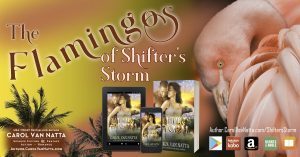Carol Van Natta's Blog, page 12
March 8, 2020
When Real Life Overtakes Fiction

I write science fiction and fantasy, so I get to create imaginary things and events all the time. I also love reading about scientific advances, historical events, and fascinating people. They spark my muse, especially when they make me think, “Cool! What if….?”. However, sometimes this comes back to bite me when real life overtakes fiction in my stories.
Advances in Real Life Happen Fast
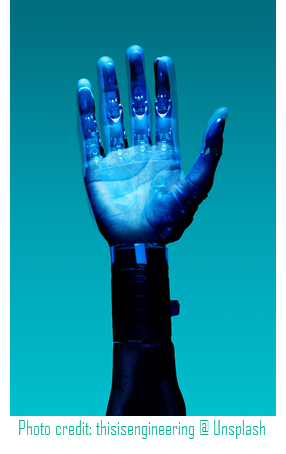 Here's a recent example. In my Central Galactic Concordance space opera series, Jumpers, the special forces marines of the future, get cybernetic replacements for unrepairable body parts. The heroine in Jumper's Hope (written in 2016) has a cybernetic thigh and knee, plus implanted processors to control them. Similarly, the hero in Pet Trade (written in 2017 for the Pets In Space 2 anthology) has implanted processors for cybernetic legs and a cybernetic arm. Both characters complain about how the nerve-to-cybernetic-limb mapping never feels quite the same as the original flesh and muscle.
Here's a recent example. In my Central Galactic Concordance space opera series, Jumpers, the special forces marines of the future, get cybernetic replacements for unrepairable body parts. The heroine in Jumper's Hope (written in 2016) has a cybernetic thigh and knee, plus implanted processors to control them. Similarly, the hero in Pet Trade (written in 2017 for the Pets In Space 2 anthology) has implanted processors for cybernetic legs and a cybernetic arm. Both characters complain about how the nerve-to-cybernetic-limb mapping never feels quite the same as the original flesh and muscle.
So what do I see in the news this week? Researchers are figuring out how to map nerves to control a prosthetic hand. It's way cool, and a much needed advancement. However, my space opera series is set much farther in the future than, say, the twenty or thirty years it might take for this kind of surgery routine. Clearly I need to improve my futuristic advances in cybernetics.
Real Life Overtakes My Current Fiction, Too
At the start of my latest story, Spark Transform (being written in 2020), the hero is recently recovered from catastrophic injuries caused by being crushed by a collapsing building. He spent weeks in surgery and months in physical therapy. The procedures to rebuild his body included 3-D printing of bone, muscles, blood vessels, and skin. In my far-future space opera universe, any half-decent medical center on any planet can do them.
And now I find out that we're already starting the building blocks to achieve this. Clever scientists have invented a biologically-based material that can be 3-D printed into tubular shapes that act like blood vessels. Looks like I need to improve my futuristic advances in medicine, too, because the future is now.
Actually, I shouldn't be surprised. This has happened to me before. In the late 1980s, I co-wrote Hooray for Holopticon, a science-fiction romp about a brave little company taking on the overbearing tax authority. Publishers didn't want it back then. Fast forward to 2009 and the rise of independent publishing. We loved publishing our hilarious, fast-paced, well-plotted pride and joy, but we had to include a disclaimer about the dated technology. It seems that in the interim, someone actually invented two of our book's totally imaginary technologies: the internet and email.
Even Real Life Events Overtake Fiction
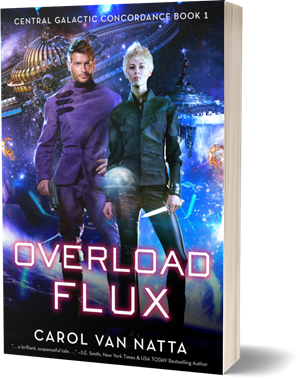 Population density and modern mobility make the perfect breeding ground for a novel disease to spread and infect people across civilization. And no, I'm not talking about COVID-19. I'm talking about the first book in the CGC series, Overload Flux (written in 2014). The plot centers around the mystery of missing vaccine for a pandemic virus-phage that is spreading across the galaxy. It has a long incubation time, making it difficult to detect and stop its spread. Sound familiar?
Population density and modern mobility make the perfect breeding ground for a novel disease to spread and infect people across civilization. And no, I'm not talking about COVID-19. I'm talking about the first book in the CGC series, Overload Flux (written in 2014). The plot centers around the mystery of missing vaccine for a pandemic virus-phage that is spreading across the galaxy. It has a long incubation time, making it difficult to detect and stop its spread. Sound familiar?
Don't worry, I'm not going to let these issues stop me from writing. If I keep dreaming up my ideas for fantastic advances, I'm hoping that scientists will keep making them reality.
I have a wish list. To start with, Pico's Crush mentions a home clothing printer that will create stylish, made-to-measure clothes in an hour or two. I'll gladly contribute to the IndieGoGo campaign of whoever invents this. 
March 1, 2020
Authors of Color Write SciFi Romance
Opinions and Recommendations

This is a companion to my post on Authors of Color Write Paranormal Romances. Because apparently it has to be stated that authors of color write scifi romances, too.
I know, you're shocked. 
February 23, 2020
February 16, 2020
Legends and Myths
I believe humans are the storytelling animal. Important information is easier to remember if it has a story behind it, because stories give it context, emotion, and meaning. Of course, just like my dearly departed grandmother, we also have a tendency to rarely let the truth get in the way of a good story. I suspect that's how our legends and myths started. And it's my delight as a paranormal romance author to bring them to life.
For example, the First Peoples of the northern latitudes of the North American continent tell of a mythical predator that is both wolf and orca. According to the legend, beware of one-way wolf tracks that lead to the sea. Individually, these animals preyed on humans, so a cautionary tale combining them would make them doubly scary. As a result, even young and inexperienced hunters would remember to respect them.
 I brought this myth to life in Dire Wolf Wanted (Ice Age Shifters Book 4). Hero Arvik's people are legends among not only the First Peoples, but the magical species, too. Shifters, elves, and fairies had very good reasons to fear the rapacious ahklut of old, who were known as the Terror of the North. However, the ahklut of today are at a crossroads, and must choose the path to destruction or the path to life.
I brought this myth to life in Dire Wolf Wanted (Ice Age Shifters Book 4). Hero Arvik's people are legends among not only the First Peoples, but the magical species, too. Shifters, elves, and fairies had very good reasons to fear the rapacious ahklut of old, who were known as the Terror of the North. However, the ahklut of today are at a crossroads, and must choose the path to destruction or the path to life.
By the way, taking real-life events and giving them secret magical causes is equally fun.
Shifters are Legends and Myths, Too
I expect it would be easier to count the civilizations that don't have a shapeshifter myth or two. Long, long ago, when humans were prey as often as they were predators, memorable stories helped our ancestral clans avoid being eaten by lions, tigers, and bears. We envied their stealth, strength, and grace. Then the storyteller's greatest gift—the power of “what if?”—took hold, and shifter legends and myth were born.
Therefore, it's no wonder that paranormal romance authors took them and ran with it. This is because stories have another power: empathy. Humanizing others not like ourselves. Allowing us to see that smaller dogs could become our allies in the shared desire to eat and be safe. Encouraging us to share food with cats so they'd stick around to hunt pests. Consequently, it's not much of a leap to imagine a human who can become a dire wolf or a prehistoric lion.
And from there, paranormal romance authors like me gave them lovelifes. 

P.S. A future story in the Ice Age Shifters® series features a shifter hero who is a legend in his own right, and the ancient mortal enemy of the ahklut. No spoilers here, but readers of Dire Wolf Wanted have already met him.

The post Legends and Myths appeared first on Carol Van Natta - Author.
February 9, 2020
Women In Science Day
My trusty calendar tells me that Tuesday, 11 February, is International Girls and Women in Science Day. Hooray! I grew up with scientists and have worked with them a lot over the years. Science fascinates me, so it's probably no surprise that I write science fiction.
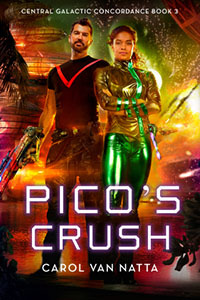 My Central Galactic Concordance space opera series features several women who are in the sciences. In Pico's Crush, main character Andra De Luna has the future equivalent of a doctorate in materials science. She shares her love of science by teaching at the Optimal Polytechnic Institute. One of her students is Pico Adams, a math prodigy and a promising scientist in her own right. Pico also happens to be the daughter of Jerzi Adams, the other main character in Pico's Crush and who previously served with Andra in the military. They all apply a bit of science on the fly, in between a few explosions, of course. No one blows up a planet, but a manufactured island is a little worse for wear by the end of the story.
My Central Galactic Concordance space opera series features several women who are in the sciences. In Pico's Crush, main character Andra De Luna has the future equivalent of a doctorate in materials science. She shares her love of science by teaching at the Optimal Polytechnic Institute. One of her students is Pico Adams, a math prodigy and a promising scientist in her own right. Pico also happens to be the daughter of Jerzi Adams, the other main character in Pico's Crush and who previously served with Andra in the military. They all apply a bit of science on the fly, in between a few explosions, of course. No one blows up a planet, but a manufactured island is a little worse for wear by the end of the story. 
February 2, 2020
Flamingos Are Delightful
I love animals, which is why I write shifter paranormal romances (PNRs) and animals appear in half of my space opera series. It's the fault of my cats, of course. 
January 26, 2020
Authors of Color Write Paranormal Romances
Note: Contains opinionated author opinions and book recommendations

I'm a sucker for a good story, regardless of who wrote it. Sometimes the author becomes the story, in both good and bad ways, which is a topic for another day. Today's topic is that authors of color write paranormal romances.
 Seems obvious, right? Authors of color write everything, including paranormal romances. The trouble is, too many people still think “author” means a tweed-wearing old white guy holding a pipe or the white woman holding up her book like she's selling toothpaste.
Seems obvious, right? Authors of color write everything, including paranormal romances. The trouble is, too many people still think “author” means a tweed-wearing old white guy holding a pipe or the white woman holding up her book like she's selling toothpaste.
Full disclosure: I'm white. That's my photo to the right. My family and friends are all races. I live in a country where white privilege is high and awareness of it is low. I still catch myself making assumptions about race, class, and gender based on my phenomenal luck to be born a white, middle-class, neurotypical, cis-gender female. Hopefully, my not-so-sheltered friends call me out when I say stupid things.
The Power of Stories
Dry facts rarely change minds, but stories often do. They offer context, teach compassion, and the chance to walk in someone else's shoes. Good stories are both overtly and subtly subversive. Stories are anathema to people who want to ignore, to control, to suppress, or to erase things they don't like.
Example #1
Let's say the factually-stated intent of a new government policy is to make a country's asylum process so difficult that it deters “unsuitable” people from requesting it. News reports describe the actions of guards, and videos show people in cages.
However, stories expose the unintended consequences, irrationality, or injustice behind the policy. It's stories that help us experience broken children in hospitals and babies in caskets.
Stories have the power to embarrass the people who made the policy. To outrage judges who must balance policy, constitution, and compassion. To horrify the public about what their government is doing in their name.
Example #2, with Paranormal Romances
Pretend that a large corporate publisher believes white people (or the demographic synonyms that imply white people, such as affluent, educated, manager, housewife) buy more books than people of color (or its synonyms of poor, ignorant, ditch-digger, welfare mother). Also, let's say this publisher also believe white authors write paranormal romances for white people, and authors of color write paranormal romances for people of color.
The result? Underfunded “African American-centric” imprints that under-perform and fail, creating blinding confirmation bias. “See?” the company managers tell themselves. “People of color don't buy books.” Even worse, they unconsciously confirm their opinion that authors of color don't write for “the mainstream,” and pass on their book proposals altogether.
Complete and utter horseshit.
I repeat: Horseshit.
Humans are the story-telling animal. In my opinion, this is a more accurate definition of what it is to be human than most anthropological descriptions. We all love telling stories and hearing them. True stories. Half-true stories. Made-up stories. Never-in-a-million-years stories.
Authors of Color Write Romances, and I Want to Meet Them
So, back to authors of color. I love to meet them, and to hear the story of their author's journey. They're all different and fascinating. We artists all share the same struggles balancing families, day jobs, or health challenges. However, authors of color have more obstacles. Bookstores that shelve romances by African American authors in the African American History section. A publicist who sets up a book signing tour that avoids certain cities because the author of color “wouldn't be welcome.”
Still don't believe me? Romance Writers of America, a 36-year-old romance author nonprofit support group started with the best of intentions, has never awarded its top prize to an author of color. Never. Not once.**
Therefore, I especially want to meet these authors of color. Their contribution to our shared artistic world is critically import to our society a whole. We need their voices, their point of view, and their experiences to broaden our horizons and help us privileged folk wake up and smell the damn coffee. We need to get better.
__________
**In December 2019, the RWA set itself on fire in how they handled a complaint against one of their board who is also an author of color. They soon canceled the RITA awards for 2020 because so many authors and judges withdrew. The organization has a long history of entrenched racism, as detailed in Lois Beckett's Guardian article, 50 Shades of White. Whether the RWA survives in the long run is yet to be seen.
Paranormal Romances by Authors of Color
All of these books are on my read-and-enjoyed shelf, on my TBR mountain, or on my wish list. Reminder: I make a few cents as an affiliate if you buy some of these books after clicking here.
Michele Sagara (West) ~ Website

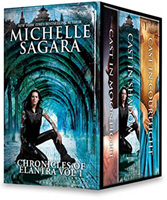 New York Times bestselling author Michelle Sagara (West) is justifiably famous for the Chronicles of Elantra series. It's a deeply layered, best-seller fantasy saga with adventure and a touch of romance. It starts with Chronicles of Elantra Book 1 Cast in Shadow. If you want to plunge right into her complex fantasy world, I recommend the box sets. Here's one with her first three books: Chronicles of Elantra Books 1-3.
New York Times bestselling author Michelle Sagara (West) is justifiably famous for the Chronicles of Elantra series. It's a deeply layered, best-seller fantasy saga with adventure and a touch of romance. It starts with Chronicles of Elantra Book 1 Cast in Shadow. If you want to plunge right into her complex fantasy world, I recommend the box sets. Here's one with her first three books: Chronicles of Elantra Books 1-3.
My favorite series of hers is the Queen of the Dead trilogy, with its inventive fantasy world, truly frightening villain, and romance arc: Silence (Book 1) • Touch (Book 2) • Grave (Book 3).
Jasmine Walt ~ Website
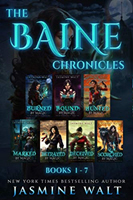 New York Times bestselling author Jasmine Walt is well known for her Baine Chronicles series and universe. It's new-adult urban fantasy with a slow-burn romance across the series. In the coming year, she says she's expanding it with a new Mischief and Magic series. Here are the first three in the Baine series, and if you like them, there are a bunch more. Burned by Magic (The Baine Chronicles Book 1) • Bound by Magic (Book 2) • Hunted by Magic (Book 3).
New York Times bestselling author Jasmine Walt is well known for her Baine Chronicles series and universe. It's new-adult urban fantasy with a slow-burn romance across the series. In the coming year, she says she's expanding it with a new Mischief and Magic series. Here are the first three in the Baine series, and if you like them, there are a bunch more. Burned by Magic (The Baine Chronicles Book 1) • Bound by Magic (Book 2) • Hunted by Magic (Book 3).
If you like binge reading, here's a box set of the first seven to satisfy your addiction and save you some money: Baine Chronicles 1-7.
LaVerne Thompson ~ Website
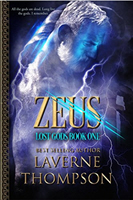 USA Today bestselling author LaVerne Thompson is known for erotic romances, but she writes intriguing PNR, too. I have several of her books in my collection. Try this standalone to see if you like her style: The Beast Within. If you do, try these series:
USA Today bestselling author LaVerne Thompson is known for erotic romances, but she writes intriguing PNR, too. I have several of her books in my collection. Try this standalone to see if you like her style: The Beast Within. If you do, try these series:
Story of the Brethren romantic fantasy: Dragon Heart (Book 1) ~ Dragon's Blood (Book 2)
The Children of the Sea fantasy romance series (read these in order): Sea Bride (Book 1) ~ Sea Storm (Book 2) ~ Sea Witch (Book 3. Note: Sea Witch has a cliffhanger ending; Thompson promises that book 4 is coming in spring 2020.)
The Lost Gods series is fantasy romance with an intriguing premise: Old gods are reborn in modern times to fight an ancient evil. Read these in order: Zeus (Book 1) ~ Ledo (Book 2) ~ Linc (Book 3)
Brooklyn Knight ~ Website
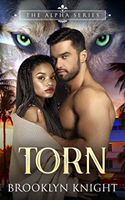 Brooklyn Knight wrote a contemporary romance series, The French Connection. In that same world, she branched out into the paranormal romances with her Alpha Series, which is how I discovered her. Torn (Book 1) ~ Loveless (Book 2).
Brooklyn Knight wrote a contemporary romance series, The French Connection. In that same world, she branched out into the paranormal romances with her Alpha Series, which is how I discovered her. Torn (Book 1) ~ Loveless (Book 2).
She also has a paranormal fantasy that's waiting for me in my TBR. I think it's part of shared-universe series, which is why it's listed as Once Upon a Villain Book 7: Pied
Destiny Hawkins ~ Website
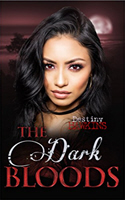 Destiny Hawkins' flagship series is The Descendants. However, I'm a big fan of her Blue Moon paranormal romance series: Krystal Blue (Book 1) and The Dark Bloods (Book 2).
Destiny Hawkins' flagship series is The Descendants. However, I'm a big fan of her Blue Moon paranormal romance series: Krystal Blue (Book 1) and The Dark Bloods (Book 2).
If you like YA fantasy dystopian with romantic elements, here are links to the first two books in The Descendents series (read these in order): The Descendants and The Calling.
Theodora Tyler ~ Website
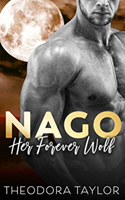 Contemporary romance author Theodora Taylor writes shifter romances, too. This are the books I have so far, and lucky me, there are more to read: Her Viking Wolf (Alpha Kings, Book 1) ~ Nago (Brothers Nightwolf Book 1)
Contemporary romance author Theodora Taylor writes shifter romances, too. This are the books I have so far, and lucky me, there are more to read: Her Viking Wolf (Alpha Kings, Book 1) ~ Nago (Brothers Nightwolf Book 1)
~ ~ ~

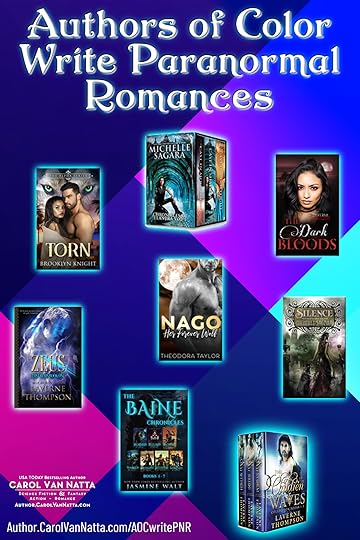
The post Authors of Color Write Paranormal Romances appeared first on Carol Van Natta - Author.
January 19, 2020
Hurricane Recovery for Puerto Rico
My latest paranormal romance, Shifter's Storm (Ice Age Shifters Book 5), takes place on the island of Vieques, part of Puerto Rico. I took my inspiration from the news reports about the tremendous damage done by 2017's Hurricane Maria. Hurricane recovery for Puerto Rico has been abominably slow (see my soapbox rant, below).
To be fair, recovery is harder because of the usual logistical challenges for islands, such as transportation issues and infrastructure limitations. For example, you can't just borrow extra electrical grid capacity from a neighboring state. Or send a truckload of emergency response electrical workers to restore power after an earthquake.
History of Vieques Island, and a Different Kind of Recovery

In the real world, Vieques got scrubbed by Hurricane Maria as much as the main island did. Vieques is about 8 miles (13 km) east of the much larger island of Puerto Rico, and has been inhabited by humans for three thousand years. Vieques has a tumultuous history of abuse, both from nature and humans. Unluckily for the natives, European explorers (and exploiters) found them easy to conquer and enslave. A couple of centuries later, Black immigrants (some slaves, some free) worked the sugar plantations. In the 1940s, the U.S. Navy bought more than half the island, throwing most of the population out of work.
The Navy chose to use Vieques for decades of artillery practice and bomb tests. They finally agreed to stop the practice in 2003, only after a native was accidentally killed, the local cancer rate was much higher than average, and years of protests. They withdrew, and much of their land became a U.S. Fish and Wildlife Refuge.
Shifters to the Rescue for Hurricane Recovery
In the Ice Age Shifters universe, magical creatures only agree on one thing: Never, ever reveal the existence of the hidden magical world to ordinary humans. While shifters and other mythical creatures are powerful, humans outnumber them considerably. So when the flamingo shifters in Shifter's Storm decide to help Puerto Rico with hurricane recovery after “Hurricane Chantal,” they must do so quietly. They choose to start the island of Vieques because they have friends and family who live there.
They're also smart enough to enlist professional help in the person of Chantal Hammond. She's a leopard shifter, but more importantly, she's a deputy sheriff with search and rescue experience. She's on loan to the tiny town of Barron, where the flamingos live. See this excerpt for their sales pitch in recruiting Chantal for their recovery effort. They're not above pointing out that the mythical hurricane in the book and Chantal share the same name, if it helps seal the deal. 
January 12, 2020
Habitable Planets in the Central Galactic Concordance

In my far-future Central Galactic Concordance space opera series, humans have expanded to 500+ colonized planets, with more on the way. The key technologies behind this achievement are faster-than-light (FTL) drive, near-instant communications, and terraforming capabilities. These allowed us to find potentially habitable planets and remodel them with Earth-like features.
Earth Is the Only Planet We Know Is Habitable
In the real world, we're limited to sending spacecraft beyond our planet to explore the solar system and the galaxy beyond with probes, telescopes, and computers that phone home with the collected data. Even so, we're finding fascinating features all the time.
For example, NASA's TESS (Transiting Exoplanet Survey Satellite) telescope just found a new “Goldilocks” planet. These are planets that are just the right distance from their star—close enough for water to be liquid, and far enough for it to stay that way instead of burning off. But is it habitable? We'll only know for sure when we get there.
My space opera's series assumed technologies—including starships—make my stories possible. Admittedly, the assumptions are sweeping. Fortunately, humans are ingenious. Look at the strides we've made in the last 50 years. For example, computers (one in every pocket), medicine (organ transplants, cancer treatment), materials science (batteries, graphene), ecology (climate change). Thanks to global communication and reams of shared data, we can build on the discoveries of others instead of reinventing the wheel.
Planet Terraforming to Make Habitable Planets
I'm a glass-half-full kind of person. Therefore, I believe we'll theorize, invent, and engineer our way out of our current human-caused climate change trouble. Probably not easily, and not without damage that will take centuries to repair, but we'll do it. And that is the foundation of my base terraforming technology for my series. If our FTL drive helps us find Goldilocks planets, why not remodel them to nurture Earth creatures?
Of course, that's not without controversy or consequence. Who pays for it? The settlement company in Pet Trade that marketed a frontier planet for colonization extracts an upcharge for everything from its colonists. In Last Ship Off Polaris-G, the greedy settlement company may have accidentally killed their own planet's ecosystems in an effort to force the settlers into more debt. In Overload Flux, a pharma company might be mining the secrets of a failed terraform planet that should have been planet-poisoned but has now become a dangerous hybrid.
As to consequences, what potential advancements do we lose when we destroy an existing biome instead of learning from it? It may turn out that the riskier path is living in a bubble.


The post Habitable Planets in the Central Galactic Concordance appeared first on Carol Van Natta - Author.
January 5, 2020
Shifter’s Storm Excerpt
Chantal Hammond is the heroine of Shifter's Storm, the latest book in the Ice Age Shifters paranormal romance series. She's a modern and independent-minded leopard shifter. She's also a sheriff's deputy on loan to another jurisdiction. Cougar shifters run the tiny Barron County, Florida sheriff's department, but they haven't been very welcoming. The much friendlier flamingo shifters run the hidden shifter town of Barron itself. After a recent hurricane pounded the Puerto Rican islands (again!), the flamingo shifters plan to lend a hand in the recovery, especially on the island of Vieques. They also have a plan for Chantal. 





